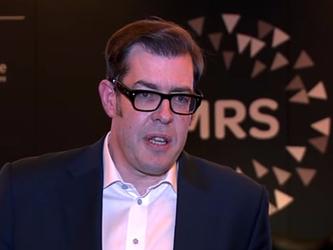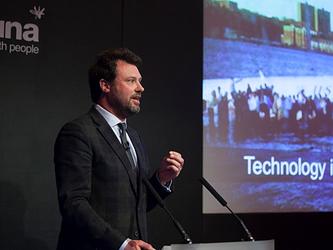Technoanalysis: the path to enlightenment?

Peter Dann, director at The Nursery, used a surprising excerpt from James Bond story Goldfinger – detailing a slow journey from London to Sandwich preceding the construction of the M3 – to illustrate how old-fashioned customer journey mapping is no longer relevant to modern life.
"We're navigating a world of choice using journey maps from the sixties, which are the equivalent of system two thinking," Dann said. "System one represents the motorways of neuroscience."
Using findings gathered using Journey HQ, a customer journey research app, Dann described how details of parents’ decision-making journey towards buying a smartphone for their children would have been missed if only old-fashioned self-reporting techniques had been used. The app allowed researchers to capture initial resistance to the purchase, and children’s attempts at persuasion, as well as parental post-rationalisation to explain away their eventually having given in to demands.
Marie Wolfe, consumer & market insights director of innovation at Unilever (pictured), described how she, through Unilever’s Foundry, had established a relationship with a startup of Google Glass programmers to leverage the recording technology for research.
While they hadn't previously been working in the research space, within one week of initial discussions, the startup had a name – Weseethrough – a logo, and a fully programmed dashboard. The technology is now used to observe customer behaviour in real life, from their perspective – offering insight into behaviour that wouldn't normally be seen, that would be inaccurately reported or not recalled. "It’s about less asking, more about knowing," said Wolfe.
Lastly, James Burke, senior associate director at Kantar Media, went through research findings from a project looking into incorporating advertising into gaming. The approach used galvanic skin response and facial recognition to gain insight on gamers' reactions that went beyond verbal feedback.
Using this combination of measures, the team had uncovered interesting clues around where and how to incorporate brands that would ensure that they were noticed – but didn't jar – and that they had a positive impact.
"There are three ‘Es’ of brand integration [into gaming]," Burke concluded. "Exposed – which gives transactional benefits; embedded – which gives an immersion benefit; and enhanced – which adds kudos to the other two."

We hope you enjoyed this article.
Research Live is published by MRS.
The Market Research Society (MRS) exists to promote and protect the research sector, showcasing how research delivers impact for businesses and government.
Members of MRS enjoy many benefits including tailoured policy guidance, discounts on training and conferences, and access to member-only content.
For example, there's an archive of winning case studies from over a decade of MRS Awards.
Find out more about the benefits of joining MRS here.














0 Comments